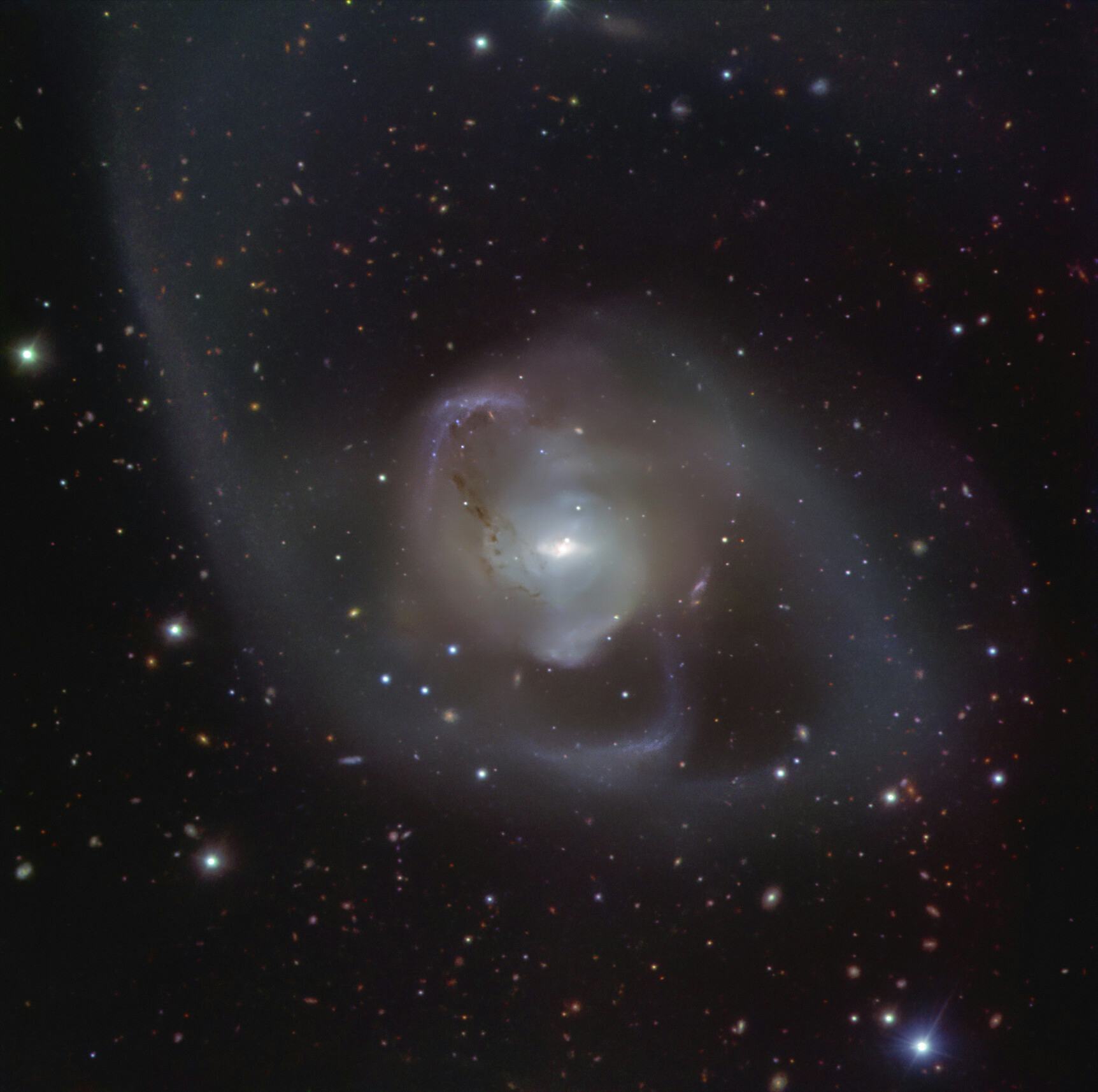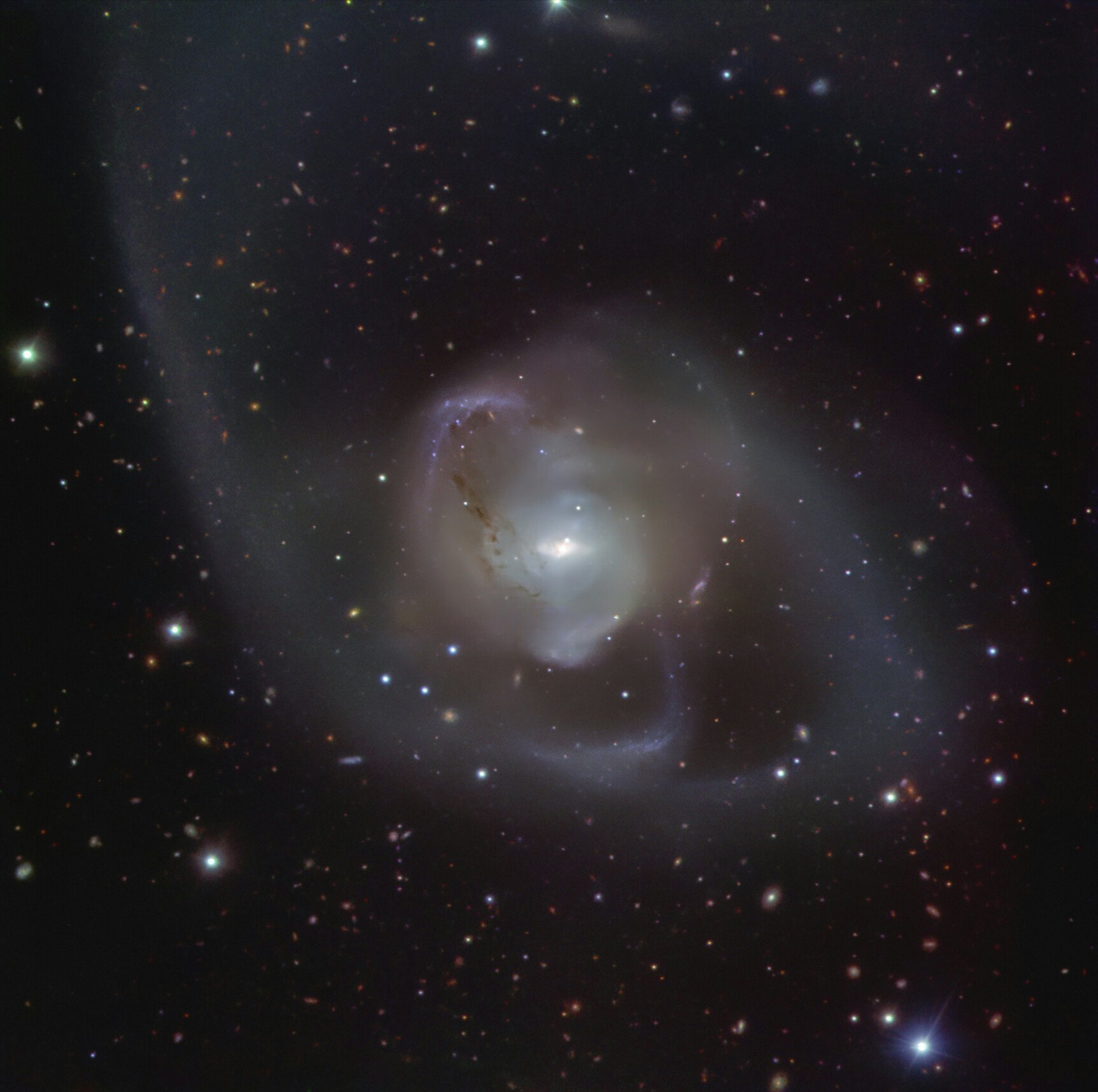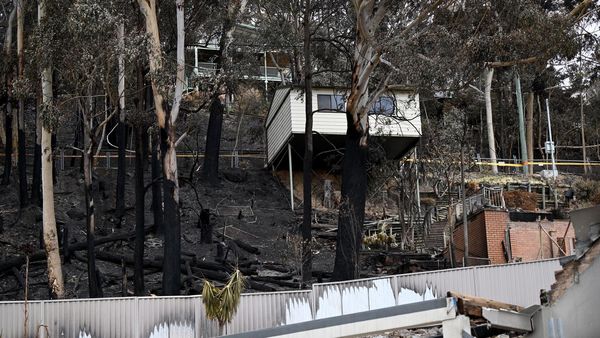
The galaxy NGC 7727 is full of chaos. It’s the byproduct of an explosive galactic merger that began a billion years ago, and it’s also home to a fateful pair of black holes that are one day predicted to collide.
The galaxy’s violent past is written into its shape and composition, and the details are visible via telescope. This week, the European Southern Observatory released a new image of NGC 7727 taken with the ground-based Very Large Telescope (VLT).
Captured in visible light with the VLT’s FOcal Reducer and low dispersion Spectrograph 2 instrument, streams of dust kicked up by the two merging galaxies can be seen spiraling around NGC 7727. Bright blue and purple clusters of stars dot the inner arms of the galaxy.

And its lopsided shape is no coincidence: as its two parent galaxies spun dusty circles around each other, the newly-formed NGC 7727 came into being in a rather uneven way.
Glowing in the center are NGC 7727’s two nuclei, each of which houses a supermassive black hole. Last year, the VLT captured a closer view of the pair.
Astronomers predict that the two black holes will merge sometime in the next 250 million years or so. Once they do, the collision will birth an even larger black hole.
We (obviously) won’t live to see that happen, but researchers are still studying the merging process to understand how the universe’s largest black holes come to be.

NGC 7727’s black holes are actually the closest pair to Earth. The whole galactic system is a mere 89 million light years away, and might offer a snapshot into the future of our own galaxy.
Here in the Milky Way, we have about 4.5 billion years until our galaxy merges with the neighboring Andromeda galaxy. The collision could birth a new galaxy not unlike NGC 7727 — dusty, lopsided, and perhaps housing its own pair of black holes.







